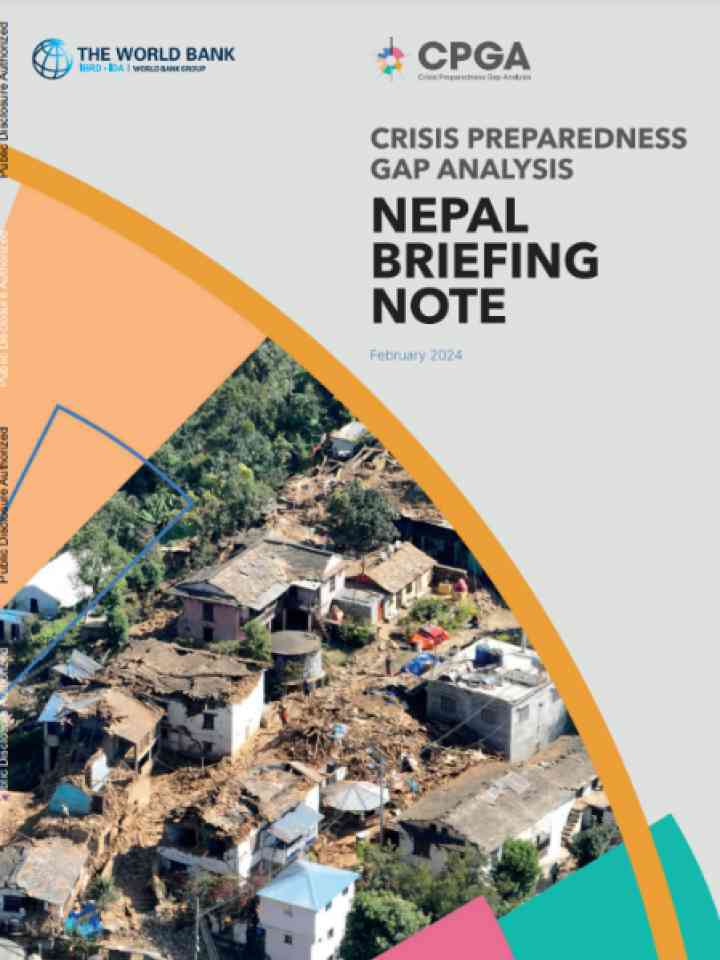Crisis preparedness gap analysis: Nepal briefing note
This briefing note presents summary findings from the crisis preparedness gap analysis (CPGA) in Nepal. The CPGA provides a shock-agnostic assessment of Nepal’s capacity to deal with crisis events whether driven by natural hazards, food insecurity, disease outbreaks, or other threats. Following a brief description of the CPGA methodology and an overview of the risk context in Nepal, this note showcases high-level insights from the preparedness gap assessment of the country, focusing on entry points and opportunities to strengthen crisis preparedness.
The overarching conclusion of the analysis is that while Nepal can manage small, localized crises, it is not prepared for large, multisector crises. Crisis preparedness is not a policy priority, and institutions concerned with crisis risks have a sectoral outlook and emphasize crisis response over preparedness. There is no effective institutional arrangement that is motivated and empowered to analyze risks and coordinate preparedness across sectors. Nevertheless, entry points for strengthening crisis preparedness exist and some of the activities recommended in the briefing note have already been initiated.
Explore further
